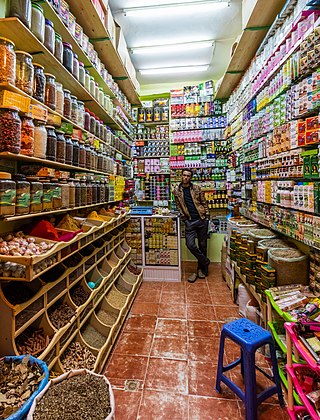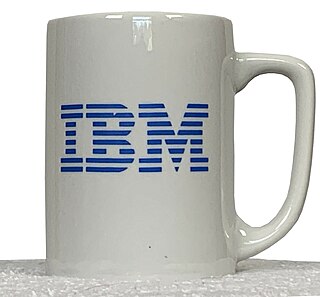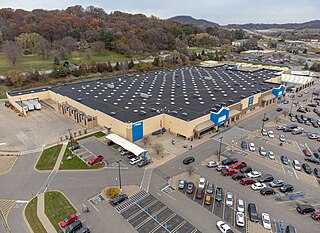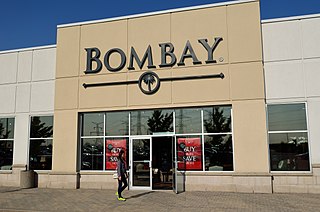This article needs additional citations for verification .(February 2019) |
The chief merchandising officer (CMO) is a top-level executive employee who controls the merchandising in a company or other organization.
This article needs additional citations for verification .(February 2019) |
The chief merchandising officer (CMO) is a top-level executive employee who controls the merchandising in a company or other organization.
A Chief Merchandising Officer has the responsibility of overseeing a company or other organization's buying and selling activities and utilizing the information gathered to develop a plan of action toward future purchase decisions. They often make these decisions on behalf of the company and steer the direction or vision of the company's merchandise strategy by analyzing trends and purchasing needs and fulfilling them when appropriate. They may also lead the merchandising sales floor in a retail environment. The Chief Merchandising Officer is generally placed in a position of authority over a group of merchandising, purchasing, or floor display staff. [1] [2]

Retail is the sale of goods and services to consumers, in contrast to wholesaling, which is the sale to business or institutional customers. A retailer purchases goods in large quantities from manufacturers, directly or through a wholesaler, and then sells in smaller quantities to consumers for a profit. Retailers are the final link in the supply chain from producers to consumers.

The T. Eaton Company Limited, later known as Eaton's and then Eaton, was a Canadian department store chain that was once the largest in the country. It was founded in 1869 in Toronto by Timothy Eaton, an immigrant from what is now Northern Ireland. Eaton's grew to become a retail and social institution in Canada, with stores across the country, buying-offices around the globe, and a mail-order catalog that was found in the homes of most Canadians. A changing economic and retail environment in the late twentieth century, along with mismanagement, culminated in the chain's bankruptcy in 1999.

The Merchandise Mart is a commercial building in downtown Chicago, Illinois. When it opened in 1930, it was the world's largest building, with 4 million square feet (372,000 m2) of floor space. The Art Deco structure is at the junction of the Chicago River's branches. The building is a leading retailing and wholesale location, hosting 20,000 visitors and tenants daily in the late 2000s.

Merchandising is any practice which contributes to the sale of products to a retail consumer. At a retail in-store level, merchandising refers to displaying products that are for sale in a creative way that entices customers to purchase more items or products.

Gimbel Brothers was an American department store corporation that operated for over a century, from 1842 until 1987. Gimbel patriarch Adam Gimbel opened his first store in Vincennes, Indiana, in 1842. In 1887, the company moved its operations to the Gimbel Brothers Department Store in Milwaukee, Wisconsin. It became a chain when it opened a second, larger store in Philadelphia, Pennsylvania, in 1894, moving its headquarters there. At the urging of future company president Bernard Gimbel, grandson of the founder, the company expanded to New York City in 1910.
Frederick & Nelson was a department store chain in the northwestern United States, based in Seattle, Washington. Founded in 1891 as a furniture store, it later expanded to sell other types of merchandise. The company was acquired by Marshall Field & Company in 1929. By 1980, the Frederick & Nelson chain had expanded to 10 stores in two states. The company filed for bankruptcy and went out of business in 1992. Its former Seattle flagship store building is now occupied by the flagship Nordstrom store.

Retail loss prevention is a set of practices employed by retail companies to preserve profit. Loss prevention is mainly found within the retail sector but also can be found within other business environments.

A big-box store, a hyperstore, a supercenter, a superstore, or a megastore is a physically large retail establishment, usually part of a chain of stores. The term sometimes also refers, by extension, to the company that operates the store. The term "big-box" references the typical appearance of buildings occupied by such stores.
Service Merchandise was a retail chain of catalog showrooms carrying jewelry, toys, sporting goods and electronics. The company, which first began in 1934 as a five-and-dime store, was in existence for 68 years before ceasing operations in 2002.

The Bombay Company is an American furniture and home accessories retailer owned by an undisclosed LLC. At one time a chain of over 500 stores headquartered in Fort Worth, Texas, Bombay Company was relaunched in 2012 as an online store. After its owners arranged a new licensing deal, a second online re-launch was planned for the High Point Market in April 2018. However, by March 2019, the online sales function of their website was still not active.
Retail media is marketing to consumers at or near their point of purchase, or point of choice between competing brands or products. Common techniques include in-store advertising, online advertising, sampling, loyalty cards and coupons or vouchers.

Computer City was a chain of United States–based computer superstores operated by Tandy Corporation; the retailer was sold to CompUSA in 1998 and was merged into the CompUSA organization.

Visual merchandising is the practice in the retail industry of optimizing the presentation of products and services to better highlight their features and benefits. The purpose of such visual merchandising is to attract, engage, and motivate the customer towards making a purchase.
Retail design is a creative and commercial discipline that combines several different areas of expertise together in the design and construction of retail space. Retail design is primarily a specialized practice of architecture and interior design; however, it also incorporates elements of industrial design, graphic design, ergonomics, and advertising.

In the retail industry, a buyer is an individual who selects what items are stocked and their key responsibility is dealing with all the products that come into the store. Buyers usually work closely with designers and their designated sales representatives and attend trade fairs, wholesale showrooms and fashion shows to observe trends. They are employed by large department stores, chain stores or smaller boutiques. For smaller independent stores, a buyer may participate in sales as well as promotion, whereas in a major fashion store there may be different levels of seniority such as trainee buyers, assistant buyers, senior buyers and buying managers, and buying directors. Decisions about what to stock can greatly affect fashion businesses.
Fashion merchandising can be defined as the planning and promotion of sales by presenting a product to the right market at the proper time, by carrying out organized, skillful advertising, using attractive displays, etc. Merchandising, within fashion retail, refers specifically to the stock planning, management, and control process. Fashion Merchandising is a job that is done world- wide. This position requires well-developed quantitative skills, and natural ability to discover trends, meaning relationships and interrelationships among standard sales and stock figures. In the fashion industry, there are two different merchandising teams: the visual merchandising team, and the fashion merchandising team.
A president is a leader of an organization, company, community, club, trade union, university or other group. The relationship between a president and a chief executive officer varies, depending on the structure of the specific organization. In a similar vein to a chief operating officer, the title of corporate president as a separate position is also loosely defined; the president is usually the legally recognized highest rank of corporate officer, ranking above the various vice presidents, but on its own generally considered subordinate, in practice, to the CEO. The powers of a president vary widely across organizations and such powers come from specific authorization in the bylaws like Robert's Rules of Order.
Pegula Sports & Entertainment (PSE) was an American sports and entertainment company based in Buffalo, New York. The company was established after billionaire Terry Pegula combined his sports, property and entertainment assets into one company. The company's assets included the Buffalo Bills of the National Football League, the Buffalo Sabres of the National Hockey League, the Buffalo Bandits and the Rochester Knighthawks of the National Lacrosse League, and the Rochester Americans of the American Hockey League. The company was operated by Kim Pegula, Terry's wife, as president and CEO.

Daniella Vitale is the Chief Executive Officer (Americas) of Salvatore Ferragamo. Prior to that, she held the role of Chief brand officer at Tiffany & Co. between November 2019 and October 2021. She was the chief executive officer and president of Barneys New York until its closure in 2019.
The retail format influences the consumer's store choice and addresses the consumer's expectations. At its most basic level, a retail format is a simple marketplace, that is; a location where goods and services are exchanged. In some parts of the world, the retail sector is still dominated by small family-run stores, but large retail chains are increasingly dominating the sector, because they can exert considerable buying power and pass on the savings in the form of lower prices. Many of these large retail chains also produce their own private labels which compete alongside manufacturer brands. Considerable consolidation of retail stores has changed the retail landscape, transferring power away from wholesalers and into the hands of the large retail chains.